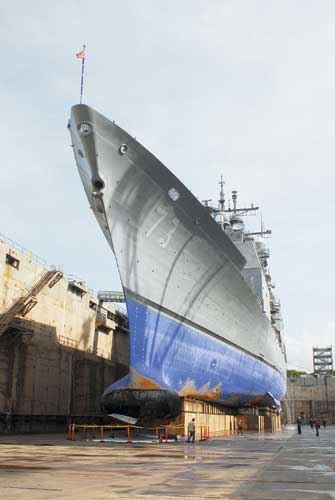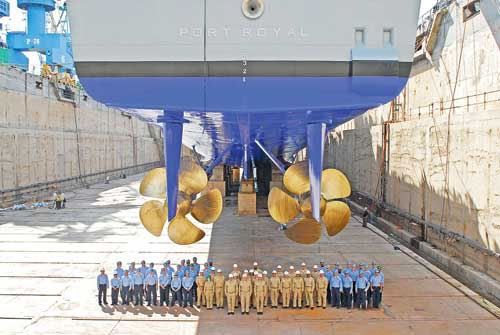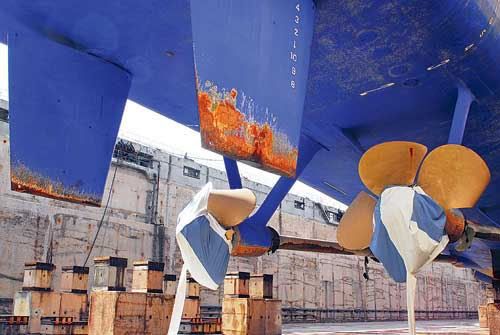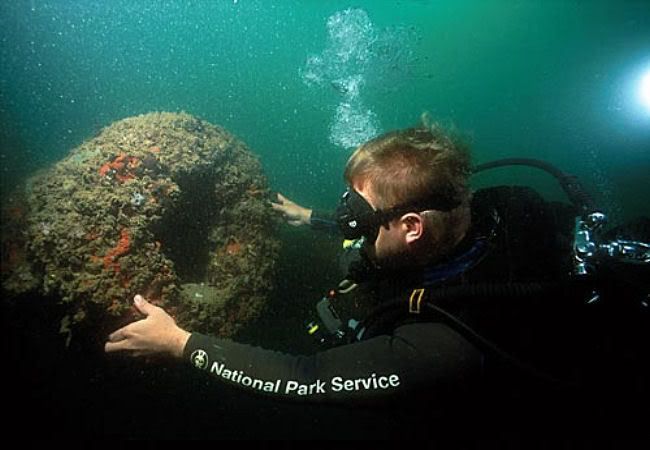All Posts (6434)

For my family and friends who LIKE KNOW:
Courtesy of Bumpy Kanahele for posting this on his website... and to Ehu who showed this link to me then asked me at Facebook what I thought of the conclusions like how OHA fails at real estate and property management but I was offline so I could not respond to him in time and when I did it my response was not sent because he was offline LOL Ugh.
Here it is!:http://www.bumpykanahele.com/OHA_Roulac_Group.pdf
Kala mai to my family and friends... if I no respond it's because I'm on da road. To me this is VERY important though so I am reposting it for all to read courtesy of Bumpy Kanahele.Those of you guys who know me know that I know lots about real estate ;) and this confirms that OHA does NOT so the question is why are they trying to transfer title WITHOUT our consent?You decide!!!FWIW dealing with real estate is SERIOUS business. *You* have to know a lot. To me it is obvious that the OHA trustees do not take their fiduciary duty AND responsibilities when they have the lives of about 401,062 Hawaiians in their HANDS.IMHO ALL of them need to be recalled and REPLACED... including one of my cousins on my paternal, MAUI side. (His son is very cool though.)* To clarify when replacing a board ALL must be recalled... THEN replaced. A few of them can stay. I won't point out who I Iike though because I KNOW they going find out if I post their names here ;)Just MY mana'o.Latahs!


 COURTESY U.S. NAVYThe guided-missile cruiser USS Port Royal sits in dry dock at the Pearl Harbor Naval Shipyard as it is readied for repairs following its Feb. 5 grounding south of Honolulu Airport. An assessment of the ship and necessary repair efforts is ongoing. The ship’s sonar dome is shown at the base of the bow.By Gregg K. Kakesakohttp://www.starbulletin.com/news/hawaiinews/20090220_Extensive_coral_reef_damage_revealed_in_ships_grounding.htmlPOSTED: 01:30 a.m. HST, Feb 20, 2009State and Navy divers have determined that the $1 billion warship USS Port Royal damaged a coral reef when it ran aground half a mile south of the Honolulu Airport's reef runway earlier this month."Although initial reports indicated that the ship had grounded on a rock and sand bottom, our subsequent surveys have shown that there is in fact coral reef," said Department of Land and Natural Resources Director Laura Thielen in a joint news release with the Navy. "Divers from our Division of Aquatic Resources are now working in cooperation with counterparts from the Navy to ensure that no further damage occurs, and to map the full extent of the grounding scar."In addition, the Navy says now that 7,000 - not 5,000 - gallons of waste water were dumped while the ship was aground Feb. 5-9 to prevent it from backing up and endangering the crew.State and Navy divers will spend another week moving debris from the grounding area to deeper water and reattaching large pieces of coral.The Navy had originally failed to tell the state and public about the waste-water discharge, even though two Health Department officials attended a meeting with Navy officials at Pearl Harbor on Feb. 8.The Navy said the waste water consisted mostly of sea water, used to flush waste."Keep in mind that while the ship was aground for those 78 hours, the Navy was concerned foremost about the safety of the crew, freeing the ship and minimizing damage to the environment," said Rear Adm. Joseph Walsh, deputy commander of the Pacific Fleet. "We regret this unintentional grounding, and we are glad that we were able to refloat the ship without injury to the crew while minimizing environmental harm."The dumping took place on Feb. 6 after a Navy barge was unable to transfer the waste water and fuel from the 9,600-ton guided-missile cruiser because of rough seas. The Navy said the Port Royal's crew made every effort to mitigate the effects, including shutting off water to showers and sinks to minimize the released amounts.The Port Royal was taken to Pearl Harbor Naval Shipyard's dry dock on Wednesday for repairs. When the grounding occurred, the vessel had begun sea trials after spending six months in the shipyard undergoing $18 million of repairs, maintenance work and repainting.Although there has been no official damage report or estimate on the cost to repair the cruiser, Walsh has said that water leaked into the sonar dome located below the bow. Also, several of the 10 propeller blades were sheared off.Photos released by the Navy show scrapes along the hull and at least five blades missing.Initially, the Navy insisted the area where the ship ran aground in 20 feet of water consisted mainly of rocks and sand.State and Navy divers from Pearl Harbor's Mobile Diving and Salvage Unit 1 have been in the water since Feb. 12, tagging and replacing broken coral blocks.The divers concentrated this week on mapping and photographing the extent of the damage to identify coral colonies that might be reattached to the reef using quick-setting cement.Thielen said the department developed undersea survey and mapping techniques from two groundings in 2005: the Cape Flattery at Barbers Point and the Casitas at Pearl and Hermes reef in the Northwestern Hawaiian Islands.Navy and state divers also are noting the locations of detached reef blocks or other debris that might roll in the surf and cause additional damage to the reef over time. These are being removed by Navy divers and disposed of at a deep-water site approved by the state.The removed rocks range from 2 to 5 feet in diameter.The Navy is still investigating the incident and has not decided the fate of Capt. John Carroll, Port Royal's commander, or any of the sailors who were on watch on the ship's bridge at the time of the grounding.The incident occurred at night while the Port Royal was transferring passengers to a smaller boat.After three unsuccessful attempts, the Pearl Harbor ship was refloated early Feb. 9. This was done only after more than half of the 320 sailors on board were taken off and 600 gallons of sea water used as ballast and two anchors and anchor chains were jettisoned. The anchors and chains were later recovered by Navy divers.
COURTESY U.S. NAVYThe guided-missile cruiser USS Port Royal sits in dry dock at the Pearl Harbor Naval Shipyard as it is readied for repairs following its Feb. 5 grounding south of Honolulu Airport. An assessment of the ship and necessary repair efforts is ongoing. The ship’s sonar dome is shown at the base of the bow.By Gregg K. Kakesakohttp://www.starbulletin.com/news/hawaiinews/20090220_Extensive_coral_reef_damage_revealed_in_ships_grounding.htmlPOSTED: 01:30 a.m. HST, Feb 20, 2009State and Navy divers have determined that the $1 billion warship USS Port Royal damaged a coral reef when it ran aground half a mile south of the Honolulu Airport's reef runway earlier this month."Although initial reports indicated that the ship had grounded on a rock and sand bottom, our subsequent surveys have shown that there is in fact coral reef," said Department of Land and Natural Resources Director Laura Thielen in a joint news release with the Navy. "Divers from our Division of Aquatic Resources are now working in cooperation with counterparts from the Navy to ensure that no further damage occurs, and to map the full extent of the grounding scar."In addition, the Navy says now that 7,000 - not 5,000 - gallons of waste water were dumped while the ship was aground Feb. 5-9 to prevent it from backing up and endangering the crew.State and Navy divers will spend another week moving debris from the grounding area to deeper water and reattaching large pieces of coral.The Navy had originally failed to tell the state and public about the waste-water discharge, even though two Health Department officials attended a meeting with Navy officials at Pearl Harbor on Feb. 8.The Navy said the waste water consisted mostly of sea water, used to flush waste."Keep in mind that while the ship was aground for those 78 hours, the Navy was concerned foremost about the safety of the crew, freeing the ship and minimizing damage to the environment," said Rear Adm. Joseph Walsh, deputy commander of the Pacific Fleet. "We regret this unintentional grounding, and we are glad that we were able to refloat the ship without injury to the crew while minimizing environmental harm."The dumping took place on Feb. 6 after a Navy barge was unable to transfer the waste water and fuel from the 9,600-ton guided-missile cruiser because of rough seas. The Navy said the Port Royal's crew made every effort to mitigate the effects, including shutting off water to showers and sinks to minimize the released amounts.The Port Royal was taken to Pearl Harbor Naval Shipyard's dry dock on Wednesday for repairs. When the grounding occurred, the vessel had begun sea trials after spending six months in the shipyard undergoing $18 million of repairs, maintenance work and repainting.Although there has been no official damage report or estimate on the cost to repair the cruiser, Walsh has said that water leaked into the sonar dome located below the bow. Also, several of the 10 propeller blades were sheared off.Photos released by the Navy show scrapes along the hull and at least five blades missing.Initially, the Navy insisted the area where the ship ran aground in 20 feet of water consisted mainly of rocks and sand.State and Navy divers from Pearl Harbor's Mobile Diving and Salvage Unit 1 have been in the water since Feb. 12, tagging and replacing broken coral blocks.The divers concentrated this week on mapping and photographing the extent of the damage to identify coral colonies that might be reattached to the reef using quick-setting cement.Thielen said the department developed undersea survey and mapping techniques from two groundings in 2005: the Cape Flattery at Barbers Point and the Casitas at Pearl and Hermes reef in the Northwestern Hawaiian Islands.Navy and state divers also are noting the locations of detached reef blocks or other debris that might roll in the surf and cause additional damage to the reef over time. These are being removed by Navy divers and disposed of at a deep-water site approved by the state.The removed rocks range from 2 to 5 feet in diameter.The Navy is still investigating the incident and has not decided the fate of Capt. John Carroll, Port Royal's commander, or any of the sailors who were on watch on the ship's bridge at the time of the grounding.The incident occurred at night while the Port Royal was transferring passengers to a smaller boat.After three unsuccessful attempts, the Pearl Harbor ship was refloated early Feb. 9. This was done only after more than half of the 320 sailors on board were taken off and 600 gallons of sea water used as ballast and two anchors and anchor chains were jettisoned. The anchors and chains were later recovered by Navy divers.
Around-island march to throw light on Native Hawaiian issues
By KEKOA ENOMOTO, Staff Writer
Article Photos
LAHAINA A group of Native Hawaiians plans to walk around Maui island under the auspices of E Ka'apuni A Ho'a Kukui Na Moku'aina, which means: torch march through the moku, or districts.
Principals of this six-day, nearly 200-mile kaapuni, or circuit, include members of the Kapu ohana of Kauaula - Ke'eaumoku and U'ilani Kapu, and their sons, daughter and son-in-law - and torch-maker John Aquino.
"This is a grass-roots initiative," Ke'eaumoku Kapu said last week. "Everybody is welcome to participate, everybody."
The event was timed to close the four-month makahiki season, a period of peace marked in ancient times by religious and sports activities. Ancient Hawaiian alii, or chiefs, and their entourages had made such circumambulations of each island during makahiki.
Besides closing makahiki, organizers want participants to reflect on and bring awareness to concerns, such as ceded lands issues, Kamehameha Schools admissions, water rights, and the health, education and well-being of Native Hawaiians.
The kaapuni will start at Moku'ula, or Malu-ulu-o-Lele Park in Lahaina, late Friday. Kumu hula Kapono'ai Molitau and members of his halau, Na Hanona Kulike 'O Pi'ilani, will lead Native Hawaiian rituals at 11 p.m.
Organizers will light two of the 12 torches that Aquino had constructed by mounting a can on a 6-foot length of bamboo. The torch symbolizes physical illumination as well as enlightenment in Native Hawaiian culture.
The 12 districts to be visited by in order by the marchers (with rough descriptions of less commonly known areas) are: Lahaina; Kaanapali; Wailuku; Hamakuapoko, which extends from the northwest flank of Haleakala down to the Spreckelsville-Paia areas; Hamakualoa, which includes Haiku and Kailua; Koolau, which includes Keanae; Hana; Kipahulu; Kaupo; Kahikinui; Honuaula, which includes La Perouse and Makena; and Kula.
"The enlightenment is heartfelt, spiritual in nature, and in reverence to our ancestors," an announcement of the event says. "A lighted torch to represent the enlightenment will accompany those participating. The torch must remain lit throughout the 193-mile nonstop walk around Maui. Should the lighted torch go out, the walk must begin again at Moku'ula."
Participants will set off at midnight from Moku'ula, and traverse coastal roads and trails clockwise around the island.
Marchers will acknowledge with protocol the kupuna and ohana in the various moku - such as award-winning recording artist and kupuna Richard Ho'opi'i of Kahakuloa, Foster Ampong at Wailuku, Bully Ho'opai at Hana, 'Aimoku and Lehua Pali at Kahikinui, and Kaleikoa Ka'eo at Kula.
Ohana members wishing to represent their respective moku in the kaapuni can call Ke'eaumoku and U'i Kapu at 250-1479.
People can join in at any time and trek as far as they wish, Ke'eaumoku Kapu said. They can pinpoint the location of marchers at Web site www.kpoa.com (click on "News," then "Local News").
Prospective marchers are urged to bring layered clothing for varying weather conditions, sturdy walking shoes, safety vests, hats, sunscreen, water, food and headlamp or flashlight for nighttime travel; and to arrange for a pickup at the end of their walking segment.
People also may bring a walking stick and possibly gloves for lava areas.
Organizers said a responsible adult must accompany walkers 17 and younger. A vehicle with a first-aid kit and emergency-communications radio and cell phone will be at the front and back of the caravan. Someone certified in cardiovascular resuscitation will be available as will event informational brochures, although message and protest signs are prohibited.
Organizers estimate the torch march will end Feb. 26 at Moku'ula, with ceremonies to honor deceased kupuna.
Seconding her husband's call for those interested to join E Ka'apuni A Ho'a Kukui Na Moku'aina, U'i Kapu said of the spiritual journey: "The goal is unity, for all to unite as one."
* Kekoa Enomoto can be reached at kekoa@mauinews.com.
For my family and friends who like KNOW:
Someone who is allegedly from my Among side wrote an email to me. On the Among side through my wonderful STRONG grandmother Rachel had wow... plenny kids LOL The Among family is HUGE though and to me Among women are VERY strong which I like.I think I am built JUST like my maternal great grandmother, Bessie Among. She had very broad shoulders and was solid... not like *hot solid* but SOLID SOLID LOL Which I like.Well Tane attended high school with my father. I think that is so cool!!!Anyway this Sunday my name will be in the local (NOT in Ko Hawai'i Pae Aina) newspaper *rolling eyes* LMAOTomorrow I leave again. Yes... vague LOLMarch 9th will be an awesome day because that's the day I get to make another donation to one of my causes where I get to donate to WHAT and to WHO I value so of course I am EXTREMELY happy!!!Latahs!
 "This is Navy history."Committing WAR on a PEACEFUL SOVEREIGN "NEUTRAL" NATION OF HAWAI'I 1/16/1893~ 2/17/2009CRUDE OIL STILL LEAKS THIS HEWA ,PEARL HARBOR IS ONE OF THE TEN ON THE USA SUPER TOXIC WASTE SITES THAT NEEDS TO BE CLEANNED BUT FOR LACK OF FUNDS REMAINS UNTOUCHED.LEARN > http://hawaiiankingdom.orgPOSTED: 01:30 a.m. HST, Feb 17, 2009http://www.starbulletin.com/news/20090217_Undersea_revival.htmlFor more than 900 sailors, the hull of the 608-foot battleship USS Arizona sitting on the muddy bottom of Pearl Harbor just off Ford Island serves as their final resting place.But National Park Service and Navy divers have discovered that the 31,400-ton battleship has returned to life.Brett Seymour of the Park Service's Submerged Resources Center in Denver said yesterday that "a lot of the natural habitat" has returned."When the National Park Service first mapped the ship in the mid-'80s, there was no hard coral growth," Seymour said."Now there is soft and hard coral growing on and around the battleship," said Seymour, who started mapping and filming the battleship in 1977. "We see more sea horses and sea turtles."Seymour had just completed a 90-minute dive at the stern section -- part of a 10-day project to capture underwater imagery using 3-D, high-definition technology. He explained that when viewed on special monitors and using special glasses, the pictures will be three-dimensional and very detailed.The videotape will be edited to an eight- to 10-minute film that will be shown in the Arizona Memorial's new center to help more than 1.5 million visitors each year to experience the underwater world of the sunken battleship. Educational videos will also be produced.Local National Park Service divers continuously monitor the underwater environment surrounding the battleship, with the last extensive underwater mapping done in 2005. Officials then used sophisticated laser surveying equipment and traditional methods of measuring and mapping points on the Arizona's sunken decks.In 2000, divers with high-powered nail guns fired 43 stainless steel nails into the ship's deck. Archaeologists and surveyors measured the longitude, latitude and elevation of each nail with GPS receivers.The $1.5 million underwater camera system will later be mounted on an 8-pound remotely operated vehicle that will film the interior of the battleship.Scott Pawlowski, chief of the Park Service's cultural and resources division, said the system also will be used to videotape a Japanese midget submarine sunk during the 1941 attack three to four miles off Pearl Harbor.Planning for the Arizona underwater mapping project started three years ago. Filming began Feb. 9 and will be completed by Monday.Logistical and dive support are being provided by the Navy's Mobile Diving and Salvage Unit 1, led by Chief Petty Officer Robert Galentine. The team of five Navy divers spends nearly 12 hours a day working off its 35-foot boat, which serves as floating video studio."It's a big honor to do this and to help out the Arizona Memorial," said Galentine, who has been in the Navy for 18 years. "This is Navy history."During one portion of yesterday's filming, cameraman Matt Russell, 33 feet below the surface, could be seen on a 19-inch video monitor explaining that he was situated before "a large circular formation," which was a barrier to protect gun turret 4. "After the attack, the Navy salvaged the gun and used it as a shore battery," he said.In his commentary, Russell also noted that gun turret 4 is where 32 Arizona survivors have chosen to be buried after the war. On Dec. 7, 1941, all but 554 of the Arizona's 1,731 men went down with their vessel.National Park Service officials say the new technology helps them to better understand the structural integrity of the 93-year-old battleship and whether it is any danger to the environment."It is in far better shape than can be imagined based on scientific evidence," Seymour said."There is now a vibrant coral colony," Russell noted in another taping segment as the camera panned to healthy coral.Event to show hi-def ship footageNational Park Service officials will discuss current and past underwater research projects that have been conducted on the sunken battleship USS Arizona at 6 p.m. Saturday at the USS Arizona Visitor Center at Pearl Harbor.Seating in the 152-seat visitor center will be on a first-come, first-served basis.Three-dimensional, high-definition video taken of the interior and exterior of the 180-foot battleship sunk during the Japanese attack on the Pacific Fleet on Dec. 7, 1941, will be shown and discussed. Also shown will be underwater video of the USS Utah.
"This is Navy history."Committing WAR on a PEACEFUL SOVEREIGN "NEUTRAL" NATION OF HAWAI'I 1/16/1893~ 2/17/2009CRUDE OIL STILL LEAKS THIS HEWA ,PEARL HARBOR IS ONE OF THE TEN ON THE USA SUPER TOXIC WASTE SITES THAT NEEDS TO BE CLEANNED BUT FOR LACK OF FUNDS REMAINS UNTOUCHED.LEARN > http://hawaiiankingdom.orgPOSTED: 01:30 a.m. HST, Feb 17, 2009http://www.starbulletin.com/news/20090217_Undersea_revival.htmlFor more than 900 sailors, the hull of the 608-foot battleship USS Arizona sitting on the muddy bottom of Pearl Harbor just off Ford Island serves as their final resting place.But National Park Service and Navy divers have discovered that the 31,400-ton battleship has returned to life.Brett Seymour of the Park Service's Submerged Resources Center in Denver said yesterday that "a lot of the natural habitat" has returned."When the National Park Service first mapped the ship in the mid-'80s, there was no hard coral growth," Seymour said."Now there is soft and hard coral growing on and around the battleship," said Seymour, who started mapping and filming the battleship in 1977. "We see more sea horses and sea turtles."Seymour had just completed a 90-minute dive at the stern section -- part of a 10-day project to capture underwater imagery using 3-D, high-definition technology. He explained that when viewed on special monitors and using special glasses, the pictures will be three-dimensional and very detailed.The videotape will be edited to an eight- to 10-minute film that will be shown in the Arizona Memorial's new center to help more than 1.5 million visitors each year to experience the underwater world of the sunken battleship. Educational videos will also be produced.Local National Park Service divers continuously monitor the underwater environment surrounding the battleship, with the last extensive underwater mapping done in 2005. Officials then used sophisticated laser surveying equipment and traditional methods of measuring and mapping points on the Arizona's sunken decks.In 2000, divers with high-powered nail guns fired 43 stainless steel nails into the ship's deck. Archaeologists and surveyors measured the longitude, latitude and elevation of each nail with GPS receivers.The $1.5 million underwater camera system will later be mounted on an 8-pound remotely operated vehicle that will film the interior of the battleship.Scott Pawlowski, chief of the Park Service's cultural and resources division, said the system also will be used to videotape a Japanese midget submarine sunk during the 1941 attack three to four miles off Pearl Harbor.Planning for the Arizona underwater mapping project started three years ago. Filming began Feb. 9 and will be completed by Monday.Logistical and dive support are being provided by the Navy's Mobile Diving and Salvage Unit 1, led by Chief Petty Officer Robert Galentine. The team of five Navy divers spends nearly 12 hours a day working off its 35-foot boat, which serves as floating video studio."It's a big honor to do this and to help out the Arizona Memorial," said Galentine, who has been in the Navy for 18 years. "This is Navy history."During one portion of yesterday's filming, cameraman Matt Russell, 33 feet below the surface, could be seen on a 19-inch video monitor explaining that he was situated before "a large circular formation," which was a barrier to protect gun turret 4. "After the attack, the Navy salvaged the gun and used it as a shore battery," he said.In his commentary, Russell also noted that gun turret 4 is where 32 Arizona survivors have chosen to be buried after the war. On Dec. 7, 1941, all but 554 of the Arizona's 1,731 men went down with their vessel.National Park Service officials say the new technology helps them to better understand the structural integrity of the 93-year-old battleship and whether it is any danger to the environment."It is in far better shape than can be imagined based on scientific evidence," Seymour said."There is now a vibrant coral colony," Russell noted in another taping segment as the camera panned to healthy coral.Event to show hi-def ship footageNational Park Service officials will discuss current and past underwater research projects that have been conducted on the sunken battleship USS Arizona at 6 p.m. Saturday at the USS Arizona Visitor Center at Pearl Harbor.Seating in the 152-seat visitor center will be on a first-come, first-served basis.Three-dimensional, high-definition video taken of the interior and exterior of the 180-foot battleship sunk during the Japanese attack on the Pacific Fleet on Dec. 7, 1941, will be shown and discussed. Also shown will be underwater video of the USS Utah.
